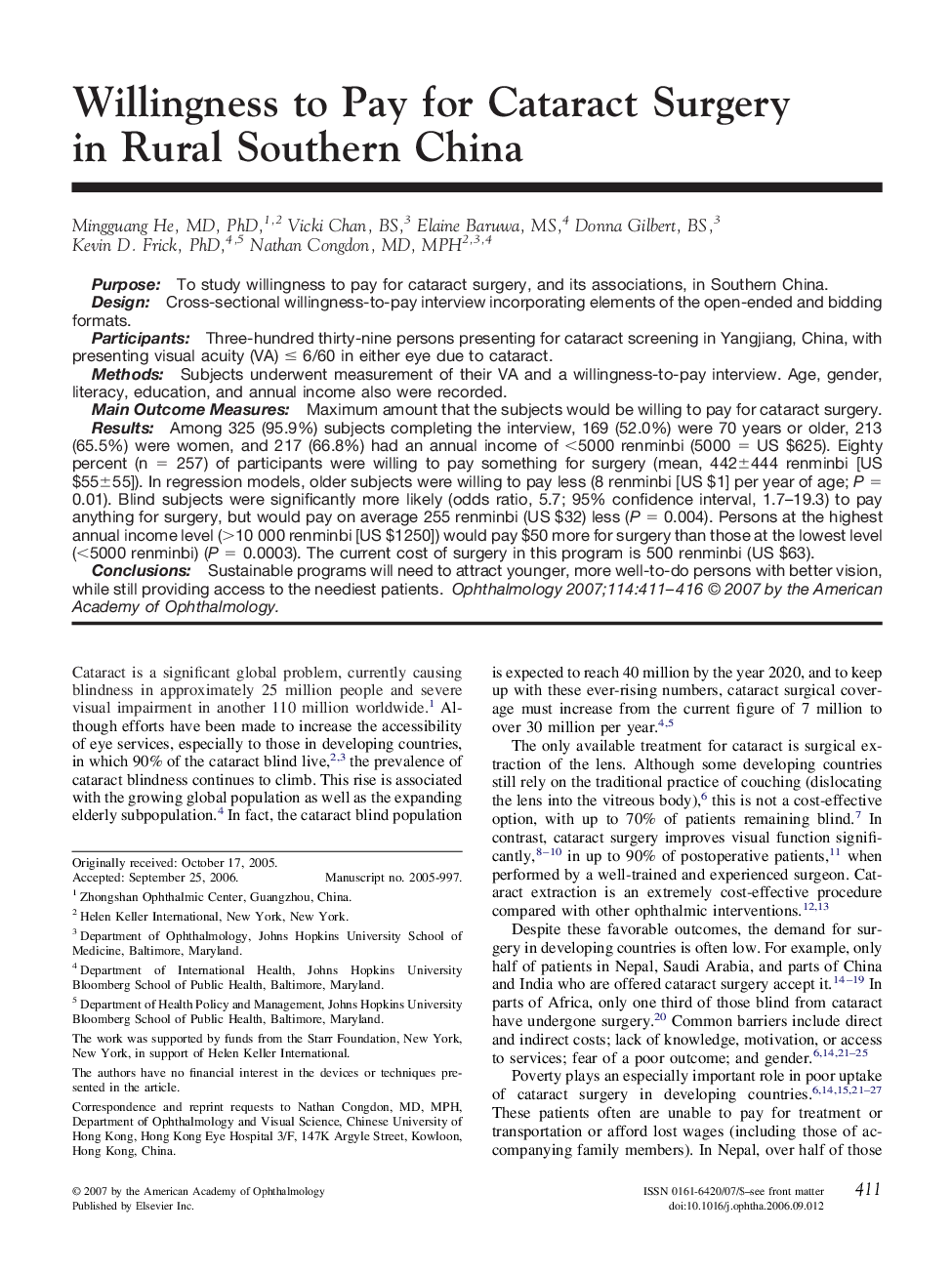| کد مقاله | کد نشریه | سال انتشار | مقاله انگلیسی | نسخه تمام متن |
|---|---|---|---|---|
| 4030541 | 1262532 | 2007 | 6 صفحه PDF | دانلود رایگان |

PurposeTo study willingness to pay for cataract surgery, and its associations, in Southern China.DesignCross-sectional willingness-to-pay interview incorporating elements of the open-ended and bidding formats.ParticipantsThree-hundred thirty-nine persons presenting for cataract screening in Yangjiang, China, with presenting visual acuity (VA) ≤ 6/60 in either eye due to cataract.MethodsSubjects underwent measurement of their VA and a willingness-to-pay interview. Age, gender, literacy, education, and annual income also were recorded.Main Outcome MeasuresMaximum amount that the subjects would be willing to pay for cataract surgery.ResultsAmong 325 (95.9%) subjects completing the interview, 169 (52.0%) were 70 years or older, 213 (65.5%) were women, and 217 (66.8%) had an annual income of <5000 renminbi (5000 = US $625). Eighty percent (n = 257) of participants were willing to pay something for surgery (mean, 442±444 renminbi [US $55±55]). In regression models, older subjects were willing to pay less (8 renminbi [US $1] per year of age; P = 0.01). Blind subjects were significantly more likely (odds ratio, 5.7; 95% confidence interval, 1.7–19.3) to pay anything for surgery, but would pay on average 255 renminbi (US $32) less (P = 0.004). Persons at the highest annual income level (>10 000 renminbi [US $1250]) would pay $50 more for surgery than those at the lowest level (<5000 renminbi) (P = 0.0003). The current cost of surgery in this program is 500 renminbi (US $63).ConclusionsSustainable programs will need to attract younger, more well-to-do persons with better vision, while still providing access to the neediest patients.
Journal: Ophthalmology - Volume 114, Issue 3, March 2007, Pages 411–416